
BB Seguridade Participacoes SA
BOVESPA:BBSE3


| US |

|
Johnson & Johnson
NYSE:JNJ
|
Pharmaceuticals
|
| US |
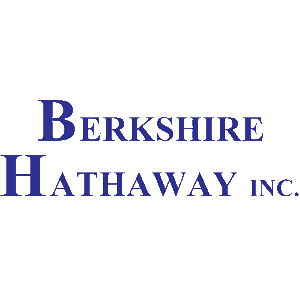
|
Berkshire Hathaway Inc
NYSE:BRK.A
|
Financial Services
|
| US |

|
Bank of America Corp
NYSE:BAC
|
Banking
|
| US |

|
Mastercard Inc
NYSE:MA
|
Technology
|
| US |
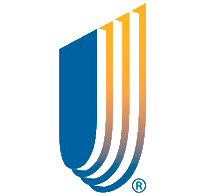
|
UnitedHealth Group Inc
NYSE:UNH
|
Health Care
|
| US |
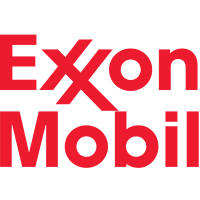
|
Exxon Mobil Corp
NYSE:XOM
|
Energy
|
| US |
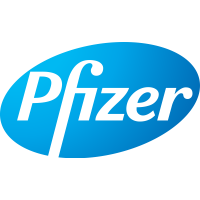
|
Pfizer Inc
NYSE:PFE
|
Pharmaceuticals
|
| US |

|
Palantir Technologies Inc
NYSE:PLTR
|
Technology
|
| US |

|
Nike Inc
NYSE:NKE
|
Textiles, Apparel & Luxury Goods
|
| US |

|
Visa Inc
NYSE:V
|
Technology
|
| CN |

|
Alibaba Group Holding Ltd
NYSE:BABA
|
Retail
|
| US |
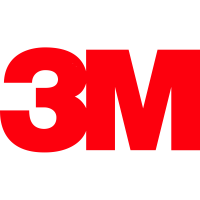
|
3M Co
NYSE:MMM
|
Industrial Conglomerates
|
| US |

|
JPMorgan Chase & Co
NYSE:JPM
|
Banking
|
| US |
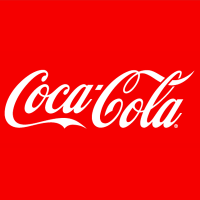
|
Coca-Cola Co
NYSE:KO
|
Beverages
|
| US |

|
Walmart Inc
NYSE:WMT
|
Retail
|
| US |

|
Verizon Communications Inc
NYSE:VZ
|
Telecommunication
|
Utilize notes to systematically review your investment decisions. By reflecting on past outcomes, you can discern effective strategies and identify those that underperformed. This continuous feedback loop enables you to adapt and refine your approach, optimizing for future success.
Each note serves as a learning point, offering insights into your decision-making processes. Over time, you'll accumulate a personalized database of knowledge, enhancing your ability to make informed decisions quickly and effectively.
With a comprehensive record of your investment history at your fingertips, you can compare current opportunities against past experiences. This not only bolsters your confidence but also ensures that each decision is grounded in a well-documented rationale.
Do you really want to delete this note?
This action cannot be undone.

| 52 Week Range |
31.95
37.42
|
| Price Target |
|
We'll email you a reminder when the closing price reaches BRL.
Choose the stock you wish to monitor with a price alert.

|
Johnson & Johnson
NYSE:JNJ
|
US |

|
Berkshire Hathaway Inc
NYSE:BRK.A
|
US |

|
Bank of America Corp
NYSE:BAC
|
US |

|
Mastercard Inc
NYSE:MA
|
US |

|
UnitedHealth Group Inc
NYSE:UNH
|
US |

|
Exxon Mobil Corp
NYSE:XOM
|
US |

|
Pfizer Inc
NYSE:PFE
|
US |

|
Palantir Technologies Inc
NYSE:PLTR
|
US |

|
Nike Inc
NYSE:NKE
|
US |

|
Visa Inc
NYSE:V
|
US |

|
Alibaba Group Holding Ltd
NYSE:BABA
|
CN |

|
3M Co
NYSE:MMM
|
US |

|
JPMorgan Chase & Co
NYSE:JPM
|
US |

|
Coca-Cola Co
NYSE:KO
|
US |

|
Walmart Inc
NYSE:WMT
|
US |

|
Verizon Communications Inc
NYSE:VZ
|
US |
This alert will be permanently deleted.
 BB Seguridade Participacoes SA
BB Seguridade Participacoes SA

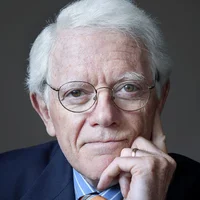



























 You don't have any saved screeners yet
You don't have any saved screeners yet
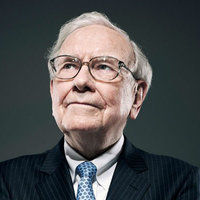
[Foreign Language]
Increasingly stronger results in our company, and this is our main objective, and we are really confident about the very promising and very good future in terms of all results -- operational results and everything. I would like to enforce my commitment to continuing the excellent work that previous -- my predecessors did, and would like to integrate my experience of more than 20 years in distributing retail products, and this is an important contribution that I can give to the company.
We are going to give priority to the digital and technological transformation agenda, and we want to be efficient and fast in launching products. And also, we have capacity to adapt to many different channels and many different modes of sales. And we are an insurance company focusing on products, and we are also distributors and maybe we can broaden our range of distribution. And this will make our company grow outside the channel, Banco do Brasil. So one of the main strengths of our company is the huge chain of branches that Banco do Brasil has for the distribution of our products, and we want to expedite it in other channels too. We have very good products. We are investing a lot in that, and we have significant growth capacity. BB Seguridade has been advancing. I have only recently joined the company, but there is many -- there are many initiatives going on, and I have started a few other ones. And as we talk, I will disclose them to you.
And what we want to do now is really to accelerate this digital transformation and distribution process in other channels than just the bank. And now we are being very careful because this is very important, which is the improvement of the experience of our customers and our salespeople, and we've been working intensely with that regard to make it increasingly more seamless and easy to understand to our customers. Same thing that we are doing with Banco do Brasil chain or network of branches, we want to provide seamless sales of our products and for -- to distribute retail products. It's fundamental for us to gain speed and more and more capillarity.
Now going a little bit into more details of our strategic modernization, and I would like to say something about our last call. Within -- during this period, we have invested BRL 55 million IT architecture. And as I said, our objective here is to develop faster and faster developed products, improving processes and also to have products that can integrate in new distribution channels. So the first product that we have launched is a home insurance product and we have a few others within the same logic to create other projects. We have also invested intensely in analytical intelligence, and we have captured BRL 92 million in sales through integrated and automated models to offer products and services through digital channels, and our results have been quite interesting. As to what we had expected in terms of digital experience, churns, products and channels, we have delivered everything that was within our scope, as we said in our last conference call. So in May, we delivered a new journey for credit life insurance, increasing sales by more than 77% in June, a new solution for premium bonds and auto insurance. It more than doubled new contracts in premium bonds. And also, we had an increase of more than 50% in sales of auto insurance. And we also have a new product, the mobile insurance for Ciclic, and now we have sold about 2,000 plans in June, and we are very optimistic in terms of providing new solutions through Ciclic.
And on the right-hand side of the slide, you can see an increase when we compare the second quarter this year with last year of 31% in the amount of businesses conducted by the company in digital channels, which is very good for us. When looking at the line chart, in June, we had almost 60% of sales through digital channels. And this is a healthy fight between our distribution channels because at the same time as we invest intensely for digital channels to sell more and more, we are also going to invest to have a more seamless process for the network of Banco do Brasil to sell more, and we hope both of them to grow together. We want to sell more and more, and we want both channels to sell more and more, and this is what matters to the company. And in addition to everything, we have our deliverables in our upcoming deliveries and new experience in pension plans. We are piloting a new model here and new personal items, insurance and new BB Dental with more coverage in addition to a new health insurance for companies. This is what we have planned to do over the next few months, and you will be seeing that shortly.
On the next page, you can see a little bit about the diversification of channels and new business models. And so we have here Brasilprev CRM, and you can see a significant evolution. We have had more than 100% increase in the conversion of digital campaigns for the allocation of pension funds, and Rafael will be talking a little bit more about that. We have had very strong movement in Brasilprev in terms of diversifying investments. We are allocating more than 50% of everything. So this was the result of very well-designed work that we conducted as a simpler product, easier in terms of contracting, and with digital channels, helping the physical channels so that we could sell a significant volume of businesses.
Broto is still growing. We raised more than BRL 700 million that we were able to capture through Broto. So we had more than BRL 400 million in the first half of this year, very interesting. We have signed the first digital partnership to offer the products of BB Dental to -- for the contracting of cleaning services. This was the first one of this type of partnership, but we have lots of negotiations going on with many other players and some partners or some third parties or providers that we already had contact with another set. I have established contact, and this is a huge opportunity, and this is going to be one of the marks of my management of my term in office.
Moreover, we have also approved BRL 45 million for investment in venture capital, especially in projects that comply with our business model, and this work has been going on for a while, started in 2017. Of the BRL 45 million that we have approved, we have already invested BRL 15 million. Moreover, this quarter too, we have launched our new BB Seguros portal where we show a new logic in terms of communication with customers, channel integration, regulation of some types of claims also because within our direct sales scope of sales channels outside the physical channels of Banco do Brasil, this portal is definitely the gateway into our company is going to bring in many businesses in the near future.
Now talking a little bit about customer experience. It's really fundamental for us, including in this open finance scenario, we are sure
[Audio Gap]
[Foreign Language]
working continuous improvement in assistance. We want to provide assistance that increasingly more compliant with what customers want, meeting their needs. So the new life and the new home insurance is already working in this format. And in addition, we had 3 customer councils with 16 improvements that were implemented as suggested by customers, and this is very important for us.
Now talking a little bit about the experience of salespeople. So we are going to work very much on the customer experience, but also on the sale -- seller experience. This is fundamental. This is very important, has a huge impact. So every time we have a more seamless and simpler experience for our sellers, this is something that we are going to pursue, and this is definitely going to improve our results. So we are working to simplify the sales journey for many different products. We have some pre offers that have already been defined in compliance with profile of each customer, and this will definitely help us. And it's already helping us to improve our sales. Additionally, we have a program in mobilizing the chain of Banco do Brasil, and we have awarded 36 employees in the first half of the year, and this is going to be successful, too, in 2021.
And in addition, when we talk about seller experience, there's another reason for us to be very optimistic because Banco do Brasil specialized network has grown now in the first half of the year, and when we expand this network, we can see better and better sales results because customers have a more customized consulting. So there are customers that are investors in the bank, this network was born through the verticalization of the full strategy per segment. And here I'm talking about retail. It started in 2019, and I was very close to this because I was the head of this segment for 2 years. And this has demonstrated to be very successful in distributing all products of the bank, and it's no different with insurance. And we hope that with the -- as the network expands, we'll have increasingly more customized sales and experience to our customers and BB Seguridade will be there, and we'll provide better and better solutions for each niche.
We also have planned launching new products, and in this case, there are some products that we have already delivered in the first half. So livestock insurance expanded to the whole country now with Brasil wide footprint, credit life family farming insurance and Brasilprev Flex, which is an accumulation product combined with risk coverage. And this is still a pilot. And still in August, we'll be launching it to other customers.
In the future, we are now delivering the new portal of Brasilprev. In the past, this channel was representative in terms of the volume of the company. And there is a project and it's been designed when it was in the commercial directorship of Brasilprev. Now recently, and we are delivering all our entire product line, and this is completely different. There's also customer experience. The portal will be completely reformulated with many new things, and we expect to attract new customers through the sales channel. We are going to intensify our agricultural insurance. And for me, the best thing here is the CRM of the brokerage company, and we want to expedite this product, too, through our CRM using the bank, CRM and our companies to have an increasingly more customized offer that will make sense and will speak to our customers.
And lastly, about our ESG agenda, something very important, as you know. In terms of governance of the company, we are very strong in that regard, but we can always improve in social and environmental. And within this context, we had an expansion of life. Vida na Ponta do Lápis, which is Brasilprev's digital platform with video classes, podcasts. So we want to provide the financial education to more than 20,000 young people all over Brasil. We also launched our BB Dental social project in order to assure oral health for children in unfavorable economic situation. And also, we have the sustainability initiatives that are part of our business. And during the first half of the year, we have more than 30,000 assistance and benefits that promoted health and well-being in life insurance, genetic mapping, psychological counseling. We had more than 75 tonnes of waste disposed in a sustainable manner, more than BRL 648 million in pension plans, assets invested in companies aligned with ESG practices, in addition to BRL 34 million of collections to philanthropic premium bonds, donations and AACD.
So these were the highlights. I'm going to give the floor to Rafael, and we are available at the end of our call for any questions you may have.
Thank you, Ullisses. Good morning, everyone, About the numbers for the second quarter and year-to-date numbers, too. Here, you can see a net income in the quarter of BRL 754 million, and this is a reduction compared to Q1 than to last year. And this was driven by many different factors: First one, we already expected it. It is related to IGP-M. So a brief summary about the dynamics and behavior. So we have here an update of the assets, always updating that the assets of the current month, whereas liabilities are updated a month later. And here, it's clear, the dynamics of what happened in the second quarter. Especially in May, IGP-M was 4.1%. Whereas, in June, IGP-M was 0.6%. So it's clear here why the dynamics ended up having an impact in our net income in the second quarter. So the assets were updated by 0.6% and liabilities in more than 4%. And there are other factors impacting both assets and liabilities, but this is because of the IGP-M. If it weren't for this effect, which is just some noise, and we know this mismatch is only temporary, it's going to go back to normal. And you can see the impact in year-to-date numbers. It's much smaller, it's BRL 42 million. But if we discount this noise, net income would have been BRL 896 million. If it weren't for this temporary mismatch once it goes back to normal, we have IGP-M from June was 0.8%, much closer. So this volatility -- and we are going to talk more about that in our presentation is likely to go down and this is very much impacted by an unbalance in terms of supply and demand. But today, looking at projections for the Central Bank, everything indicates that in the second half of the year, this effect will go down significantly.
These results have been very good. As you can see here, in Q2, a growth of 24% in premiums written, more than 32% in rural premiums written and then pension plans that had been heavily impacted last year. Pension plans have grown 64% in contributions, and we have had a very robust commercial performance and brokerage revenues have grown 15%. So the main detractors of our performance in Q2, in addition to the IGP-M, was the loss ratio because of the deaths due to COVID-19. They are temporary, nonrecurring events. And when we look at -- if we break down the results and we look in the long term, you're going to see that it's quite robust.
On the next page, you can see the 2 components. And you can see here that in the second quarter because of the strong increase in claims, the net invest income consolidated had a result of 1%, which is a marginal drop considering the volume of claims. I'm going to give you more details, even so the net investment -- the operating result was very consistent. And in year-to-date numbers, we can still exceed that. It's a slightly different concept. And here, we are having a vision where when you add all the parts, you get to the results. So this is operating result after tax. So the net operating result year-to-date grew 4%, in spite of the very adverse environment, in spite of the significant increase in the number of deaths due to COVID. Even so we were able to work around this problem and deliver better operating result in year-to-date numbers. And now net investment income, we had the impact of inflation indexes, as I said before, but we also had an opening in the interest rate curve that impacted Brasilcap especially, and also to a lesser degree, the result of Brasilseg, something that is very specific in the second quarter. You can see an increase in the average Selic year-on-year on the second half of the year. This high will become much more evident, and everything indicates that the volatility, especially in the shorter part of the curve, is likely to go down. So the expectation is much more positive for the second half of the year than it was in the first half of the year, something that is very atypical. And as you've been monitoring, our net investment income combined for the group as a whole was negative, both for the quarter and also in year-to-date numbers. And the financial result was almost 1/3 of BB Seguridade. But once again, everything indicates that this must have been the worst time in terms of net investing income, and we see a much more favorable scenario in the future.
Now talking about each one of our operations here. It's clear what I said in the beginning, a very robust growth in premiums in Brasilseg, 22% growth in the second quarter year-on-year and 15% in year-to-date numbers in the quarter. What we can see, in almost every 9 growing above 20%, which is not much different. If we see year-to-date numbers, the difference are the credit life insurance. And so we had a sales performance slightly below expected for this segment, but it started responding in Q2, and we are going to work in the second half of the year for this number to be even better. So rural insurance was one of the highlights. It (sic) [ term life ] grew 24%, and rural, 32%. These were very, very strong performances.
If you look at the main highlights, we have had record performance ever in the history of the company, more than BRL 1 billion in written premiums, best performance ever. Another positive factor that we've been observing is an increase in the number of young people in our life insurance, an increase of 81% increase in the number of customers of up to 31 years of age. In after sales through digital channels, we had 25 percentage points share of digital channels. There was this big increase in the share of digital channels, exceeding 40% of the total. Another important piece of information that we should highlight that is related to our financial performance is the launch of home insurance and the new service-oriented IT architecture. So every modality and all channels, and it's being made available with 100% with service-oriented architecture that enables more customization, more flexibility, connectivity and a more extended delivery in terms of what Ullisses said in terms of product.
As to the operational performance that we see here in the left lower chart that you can see here, last year, we could deal well with a pandemic and work around the adverse scenario. But this year, specifically, with the impact of the second wave, it ended up impacting the ages where the insurance are the most exposed to risk. And we have had a stronger increase in loss ratio getting to 20 points of growth in year 2 year-on-year. In terms of claims paid, the claims that we have already booked in the first half of the year, 2x more than what we booked in 2020 as a whole. And then I can give you more details regarding our expectation regarding loss ratio from now on in the second half of the year, but we already see a trend of drop. So we saw May and June, there was a reversal, and it was sharper and we're expecting it for the third quarter. In terms of commissions, there was a drop in commissions if we compare to last year. So if we take -- this was impacted especially by credit life and the mix was slightly more concentrated on rural insurance. Expenses also with a very positive performance with less contributions from the rural insurance provisions and contributions. And then in terms of financial has had a drop of 12% year-on-year and 19% year-to-date numbers. And as I said before, a movement of the interest rate affected the financial results of Brasilseg. So in terms of year-to-date numbers, what we can see, it was very strong and growing to 18% year-on-year in the second quarter, but the loss ratio, and the specific high that we saw in loss ratio, because of COVID taking up most of the growth in premiums. And if we add up everything and combine it with the performance and financial results, which was affected by the volatility, ended up driving the net income to a drop of 35% year-on-year and with a 2% reduction in the quarter.
Now going to the next page, pension. What you can see here in addition to the 64% high that, as I said in the beginning, in year-to-date numbers, we had a high of 30% in collection. A very strong performance in pension. And as a reminder, in the beginning of the second quarter, we had a very strong campaign in our distribution network, which provided 143,000 new customers to us, very successful campaign. In parallel, many initiatives in terms of reallocation of assets, improving the relationship between risk and return for our customers, and I am going to address that in a minute to talking about the growth in pension reserves. In terms of net inflow, we have had a reduction in year-to-year numbers.
We lost the audio from Mr. Sperendio, a failure in microphones.
So one of the main reasons that customers mentioned for that is that about 50% of our customers claimed investments, in real estate, especially. So 75% of the justifications declared a need to daily needs costing. So this is because of the pandemic. It's likely to be temporary. But even so, about 10,%, or more exactly 9.6%, in year-to-date numbers, this is a relatively low number compared to the history of Brasilprev. Another factor that had an impact in net inflow was an impact of the COVID. So this really affected our inflow. And if you look here, how much we reverted to members due to -- death due to COVID, this added BRL 4.3 billion accumulated in the first half of the year. Whereas, in the first half of last year, it was BRL 2.8 billion. This demonstrates that this high mortality due to COVID also had an impact and it had an impact in the insurance company, but also the pension segment.
Now talking about our reserves. So we have a very ambitious plan in terms of the allocation of our reserves. So we are meeting our goal. So participation in multimarket went from 8.4% in June '20 to 20.7% in June '21. So these are 2 big movements. First, the internal movement of reallocation of funds, a more specialized consulting to our customers, led to 22 million of migration and thus, generated about BRL 50 million more in terms of revenues. And this is very positive.
Another factor that helped a lot in this issue of migration and acceleration in terms of the inflow, BRL 8.8 billion in sales to multimarket, representing more than 50% of all flow in multimarket of the industry and launch of new products. In our last conference call, we talked about our new portfolio that was launched in December last year, and that has already totaled BRL 15.7 billion of assets under management, facilitating the customer and the salesperson journey. So it's practically BRL 16 billion with a new product. Another initiative that has been expanding only more gradually is the open architecture of our pension plans that has already totaled BRL 4.2 billion assets under management, 11 managers currently and we want to have another 9 by the end of 2021.
So these are the main highlights in terms of reserves and flow. And then as a result of everything, it's very clear in the chart on the left bottom, management fee. So it grew 12% as compared to the same period last year in year-to-date numbers, and we had a growth of 8% net invest income. I'm not going to be repetitive. IGP-M has caused a significant impact with their intense effect with this temporary mismatch and the gap between IGP-M and IPCA, which has driven the company to have a negative net investment income before [ tests ] of RBL 393 million year-to-date numbers and RBL 368 million in the second quarter.
Now taking the opportunity here to provide you a little bit more color about the improvements that we have had in our capital management. So the first one, as we reported to the market, we issued BRL 550 million in debt issuance to compose the minimum capital required. This is something that people very usually do to compose the regulatory capital. SUSEP has introduced it to the insurance market late last year, and we were the first one to use this instrument to compose the minimum capital requirement, and we are very successful. We did this in June. And in addition, in terms of asset management, we have BRL 1.4 billion of assets indexed by the IGP-M with swaps. So this was added to our portfolio to increase the hedge of traditional plans reserves. And this is for our liability.
So these were the main advances that we had in addition to the allocation of BRL 160 million that we have had to give the company more conditions to bear this higher volatility period. We had more 40% in excess to the minimum regulatory capital in this quarter. So even though operationally pension was very strong at 2 digits, the net investment income ended up being affected and taking up all this operational growth, and for the company, ended up dropping about BRL 30 million in year-on-year, about BRL 40 million in year-to-date numbers.
In terms of the savings bonds on the next slide. So we had a drop of 9% in the year, especially we placed great emphasis on the increase of bonds that are monthly, and this is related to the composition of our future results. And the amount of active assets in the portfolio in year-to-date numbers, this is slightly diluted. The financial margin, there was a reduction of 2.5 percentage points, and this explained both in year-to-date numbers in the quarter. And also year-on-year, there was a drop in the net financial income. And then our expectation, as before, we had a high in the Selic and rates there are considerably above the cost of the liability, and we expect that the investment income of Brasilcap will present a trend for improvement in the second half of the year. [ Expansions ] of Brasilcap have offset this drop partly, but not completely. So expenses have gone down by 24% year-on-year, 17% year-to-date numbers. And then they've helped -- that was not so sharp. In our investment income, 53% year-on-year and 16% year-to-date numbers. These are the main highlights and an increase in the digital channels, as Ullisses said.
So if we think of Brasilprev, we are already working with our CRM, and this will improve the accuracy of the sales force and another major highlight that helped a lot the customers. We have this BRL 33 million in the quarter in terms of lottery prizes that were paid in the first half of the year. So net income, as you can see here, especially because of the increase of individuals in the income, and this is dental. And the 2 comparison basis here because of the increase of the loss ratio, which was too low last year. And there was a sharp drop in every elective procedure. And because of the margin composition and our loss ratio has gone back to normal in life, the net income has dropped in the second quarter and 8% in year-to-date numbers. The main highlight here in terms of dental is the expansion of sales through digital channels, and this was very much incentivized by distribution in digital channels and the higher number of members in the second half. 2/3 came from the digital channels, almost 40% from companies. And another important point was the fully digital partnership made with the platform that we made.
Now going to the brokerage company. So here you can see the results on Slide #14. We had a strong performance in life, rural and pension. And the net margin, you can see here year-on-year in the second quarter, an improvement of 0.2 percentage points year-to-date numbers. In the quarter, there was a high explained by the Selic rate, and year-to-date numbers the improvement came from operational margin because of the flow. And then the net income has grown almost in parallel to revenue, 10% for the year-to-date numbers.
And now going to the end of the presentation. As I said, I'm going to show you a few more evidence of our scenario to explain our performance. So on the left-hand side here, you can see an increase both in the frequency of COVID cases and deaths from COVID. And what happened in Brasilseg, as you can see on the 2 charts at the center of the page, it mirrors what happened in the country. It had a direct effect on what happened in the company. So we had a significant growth in claims and in quantity, frequency and total volume of capital insurance, and then after May, it started going back to normal. There was a reversal, and it was slightly more intense in June. The distribution per age group is not much difference than what happened in a country with a higher concentration in the age group from 50 to 70 years of age. And once again, this is a reflex of what happened in the country. But apparently, when we look at the numbers, we are really confident with the trend of reversal. Especially, thinking of vaccination of the entire adult population, this is the prospect as of October. And this is something -- and according to all studies that we analyze all the time, we have the expectation of impact from COVID until the end of the year of 2021. We are having a positive surprise because of the accelerated pace of vaccination. It's very clear, in June, we can see a significant drop here, going back to levels that are similar to the levels we had in March. And the expectation is that in the next few months, in the second, third and fourth quarters, we'll see a recovery, and we hope that we'll be going back to normal levels. And it's still a little bit early for us to say anything about that, but this is what the curves are indicating to us.
On the next page, we want to show evidence of our expectation of the dynamic between IGP-M and IPCA. So you can see that historically, these 2 indexes have a positive correlation. So their movements go together. At the times crisis, there is some deviation from that, but structurally, IGP-M is not likely to be structurally above the IPCA. They usually go along. And according to what was published today by the Central Bank in the second half of the year, we are going to see the 2 indexes converging and going together again. And this will help us in our investment income performance towards year-end at the end of the year.
Now here on Slide 18, considering the high loss ratio in the first half of the year and to offset all the impact that we have had in the first half of the year, we have decided to review down our expected growth of our operational result. So we delivered 3.1%, and we are reviewing it down to the interval between 1% and 6% and not any longer between 8% and 13%. If it weren't for the COVID, our performance would be according to our estimates, would be on the top half, close to our previous guidance. But because of all the effects of the pandemic, we had to review this number down. On the other hand, we are more optimistic in terms of our guidance of premiums written. We had expected 7% to -- our first guidance was 7% to 12%. We delivered 15%. So also because of the performance of life and rural that has been very strong this year, and these are very important components in building up our long-term results. Now the guidance for reserves, we kept it. We arrived at the center of the expected range, and there's no evidence that we need to review this guidance. So we are keeping it.
These were the main highlights, and now we can move to our Q&A session.
Our first question comes from Eduardo Rosman from BTG Pactual.
I have 2 questions. The first one is, can you determine the quantity maybe in absolute numbers in million BRL? Just to give us an idea in being conservative, what could the delta be in terms of higher loss ratio and IGP-M thinking between this year and next year? You showed very clearly the impact, but maybe to quantify it and to make it easier for everyone to understand very clearly, how these 2 themes are having an impact on your results in terms of financial impact? And number two, what kinds of products are you thinking of exploring in the new channels? And what kinds of channels other than Banco do Brasil do you think of having partnership? Are you going to explore that? And this would be interesting.
Well, Rosman, thank you very much for your question. I'm going to answer the first part, and then I'm going to give it over to Ullisses to answer the second part. Well, it's difficult to quantify in terms of numbers because we don't have a guidance, but I can somehow quantify the impact. So today, when we see the loss ratio here, for the COVID year-to-date numbers that we have here, we have BRL 428 million in claims already identified as COVID. And this classification -- this is not something easy to do, and that is kind of dynamic. Expenses are completely booked in our balance sheet. This is not going to change the company's loss ratio, but classifying it as a COVID and non-COVID, it takes on average 60 to 90 days. Especially today, according to the most recent information that we have in terms of the impact, the COVID loss ratio was BRL 428 million, and this is almost double of -- this is bigger than we had for 2020 for the whole year. So this is likely to reverse as we showed you in the slide. We don't have any evidence that this would get any worse, much to the opposite. We only have evidence that this is going to get better.
As to IGP-M, we had almost BRL 400 million of negative impact and the trend, it is difficult to quantify. So there's a very low expectations. And the prospects for the market, according to focus, was 4.5 and today, it's 19. So it's very hard to extrapolate according to the forecast announced by the Central Bank, so if this materializes, we are going to reverse most of this negative performance along the second half of the year, even though we do not yet see the scenario of it going back to positive still this year and this might happen only in 2022.
Okay. Great. So we can say then that if everything goes back to normal, next year, you should have a bottom line growth that would be relatively easy just by normalizing these 2 factors. But you're still growing your topline, the company's operational result, this is all going very good. It's difficult to talk about the future. You do not yet have a guidance, but we -- just these 2 factors going back to normal will help a lot the last line, right?
Well, this is what we are expecting, Rosman. So these results of 2022, we are expecting a very robust growth. And this migration to multimarket also helps a lot in the composition of reserves and in segmentation of our portfolio management. And Selic and inflation rates go back to normal, we expect much more reasonable performance in the second half of the year.
Well, the second question about the channels. So channels outside Banco do Brasil, what do you expect? I think that BB Seguridade performance and results come much more from the Banco do Brasil, but there is an opportunity for -- to diversify.
Well, Eduardo, thank you for your question. And I would say, still talking a little bit about Rafael. We're going to really accelerate the operational results. Once everything else goes back to normal, we expect to have very robust performance in the next period. As to these open sea as you put it, Banco do Brasil is our main channel. It is and will be. But because we have the strength, we need to -- we can be very ambitious in terms of channel diversification. We have a huge portfolio, and we work on the 2 ends of the line. We have products and we distribute, too. So it depends on partners. So the partners will require from us slightly better structured products, and depending on a partner, we need leaner products that will provide, in fact, the possibility of easier sales. So I would say that we are open to many different markets. We have the ambition of having direct sales, obviously. And as I said, in Brasilprev, we are working intensely with brokers, but niche banks, digital banks, digital portfolios and many of them. And with that regard, this really makes sense. It's really synergic with our business, and we hope to have a state-of-the-art good products so that we are increasingly more attractive, and we can have partnerships. And we've been talking to a few prospective partners, and I hope at least in a final phase of completion.
We have now a question from Goldman Sachs. Thiago, can open your microphone and ask your question.
Can you hear me well?
Yes, we can.
First, the guidance, what are the risks that you see in these intervals? You talked about the expectations in terms of vaccination. So first dose vaccination until October, and also for Brasilseg. So this is compared to a weak
[Audio Gap]
the frequency of that is likely to drop sharply. How about possible impact of the vaccination? And if we move on until October, the performance and the actual numbers will start on the top half of our [ indevelop ] estimates, but still very early for us to talk about this.
Sorry, I didn't hear the second part of your question. It's similar...
It's about written premium. Do you think this can go on? Are you going to keep the same values until the end of the year?
Well, we are very optimistic, especially in terms of rural insurance and life insurance. And there is not much evidence there will be a material deceleration of that growth. It's kind of early once again, but everything indicates that we'll perform well even once we review the intervals.
Okay. This is very clear. If you allow me a second question about Brasilprev solvency. Today, we have a buffer of almost 40 percentage points, but is there anything that is worrying you towards the end of the year? Do you think this is okay, considering your debenture and the capital?
Well, before continuing, Ullisses, would you like to complement my answer?
No.
About the premium increase, I would just like to reinforce that with a specialized network in the bank and the investors, there was an expansion in the agri business, and we are very optimistic regarding this growth in premiums for the rural insurance, too. Now talking about solvency, Thiago. Today, we do not have any evidence that we would need any complement in Brasilprev regulatory capital in 2021. And in answering your question directly, what would be a risk factor and what we are observing slightly more carefully and slightly more closely and that could impact is the IGP-M structure. If there is a significant, this might end up leading us to review. Considering the current market scenario, we don't see this in the future. This is not a trend. This is the current scenario. We think that 40% excess, 39% to be more accurate, of capital -- in excess of the minimum requirement for capital, this is okay for us to bear anything that may happen.
We have a question that was asked in writing regarding the loss ratio. Can this have an impact in the company's payout?
Well, this has had an impact on the performance of the second quarter, especially in agricultural insurance. For the second half of the year, what will have an impact, especially in corn production which has been affected in the south of the country especially because of the temperatures. And in this line, we have reinsurance protection that will cover almost 80% of the risk of the company. We are not expecting a major impact of loss ratio resulting from these effects in the second half of the year.
Rafael, another question about payout. So considering everything that has been said about capital management relates to this question. So people want to know when is the company's payout level going to go back to normal?
Well, we're still adopting a posture that is relatively conservative because of the volatility in this time of transition for the reopening of the economy and the impact that this is going to have in the economic scenario and the payout, that [ 140 ] that we approved...
We have lost Mr. Sperendio again.
[Foreign Language]
So briefly going back. So we paid [ 140 ] for the first half of the year. We have adopted a very conservative behavior in terms of payout of dividends, considering the economic scenario and impact that is going to have on the main [ bank ]. [Foreign Language]
All regulatory issues impacting all the GDPR and IFGR. All the investments we've been making, especially of expansion and the distribution channel is something that can -- should be considered because it's a very important variable in terms of dividend distribution.
Another question from the Q&A. And you've mentioned about the increasing number of assets in terms of IGP-M, BRL 1.4 billion. Some people are asking about the expansion pace of these assets in order really to have better protection in terms of the amount of reserves.
We have taken important strides towards that, even though we have a very challenging context in terms of IGP-M, it doesn't seem to be as simple as it may look at first sight to buy IGP-M indexed assets. What we have observed in addition to the BRL 1.4 billion, there are already 2 issuance under negotiation, under restructuring really, and we probably will have more information about that in the second half of the year and another discussion about the counterpart willing to issue IGP-M indexed bonds.
The main challenge, even though we have really progressed a lot in these adjustments, and it gets to close to 80% of matching between indexed for IGP-M because we had an important maturity of [ IPCA ]. As seen in April, the government stopped to issuing this IGP-M 06 index bonds, and we still had some remaining 2 maturity, for April 21 and January 31. So we have just reorganized all the maturity of April and then added a small buffer of bonds indexed by IGP-M. The main challenge, as I told you, is to deal with the maturity date. It is difficult to obtain any maturity rates greater than 5 years because of the volatility of this index. But it's a onetime situation. It's something really that's not remain in the long term. If I'm considering our assets, those which are indexed by IPCA, probably they are going to make a difference. But during this transition period, we are going to reduce volatility and then focus on the elongation of the portfolio.
There is 1 more question to -- by Domingos Falavina of JPMorgan.
Two questions. You've made a comment and you said, you were confident about these expectations for the year. But -- and you've made your disclaimer, saying that depending on the interest rate curve. So let me understand the mechanics behind it. Your -- if the NTNB closed at real interest rate levels, how would that impact your balance sheet? And second question. You've talked about the problem of the duration, the maturity duration of the assets. As we are talking about a traditional plan where you no longer sell it, what is the duration -- maturity duration of this portfolio in terms of liabilities? When did you stop selling it? What's the average age range of the population? And how is it going to impact your liability in terms of how much you're going to pay?
Thank you, Domingos. Thank you for your question. In terms of the maturity, it's about 11 years. 11 years is the duration of the portfolio as a liability. We discontinued selling it in 2002, but clients can still maintain their regular contributions to the plan. They can make periodic investments, which had already been part of the contract, and this is why we have decided to discontinue selling it. But the average duration of maturity is 11 years.
11 years using P83? Or it's already an adjusted estimate to the new reality?
I don't know top of my head if it's Table 83. I'm almost sure, but it's using contract conditions, contract dispositions. It's not updated. No, it's not updated.
Concerning your second question, we still are very conservative. Even though operationally, we have very few questions that the results will eventually be much better in 2022 than in '21, especially concerning the reduction of loss ratio. But the number of variables with a positive major average, the interest rate Selic, we've been reducing the duration, especially in Brasilcap in terms of fixed items, but inflation is still an unanswered question, especially concerning the -- how the economy will behave once service resume its normal operation with no more restrictions due to COVID. Some countries that have resumed economic activity, the services have been reacting even faster than initially expected. I don't know whether this is going to be the same or not in Brasil, I do not think so. And if so, it might be favorable in terms of financial results of Brasilprev. So services picking up, conversions between IGPA and IGP-M will probably take place, but it's still too early. It's too early to quantify the impact. But well, it seems that the results for 2022, operating, finance, so bottom line, nothing points to negative performance in a nutshell.
Well, there are no further questions. So with that, we close our conference call. Should any of your questions have not been answered live, we are going to submit them in writing. We would like to ask you to access the questionnaire so that we can keep on improving our relationship with all of you. So here you have the link and the QR code.
On behalf of BB Seguridade, Ullisses and Rafael would like to thank you all for being here. And our IR team, myself and all our team members are here available to answer any further questions.
Rafael, any closing remarks?
Well, thank you all very much for your participation and have a great day, everyone.
Thank's, everyone. Have a great week.
Thank you very much. Have a good day.
[Statements in English on this transcript were spoken by an interpreter present on the live call.]